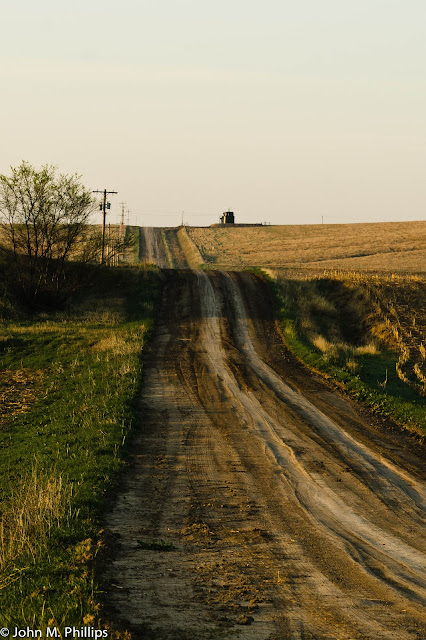The other morning there was a heavy frost, abundant early morning sun, and little wind, and some of my shots were attempts to capture the frost, even if one of the main subjects was a dandelion.
I also liked the following leaf, which was being backlit by the sun.
By taking the shot at an aperture of f/10, I was able to preserve most of the detail in the leaf without introducing much background clutter. I also liked that I placed the leaf off-center, leaving more negative space. Even though the leaf was backlit, the texture in the leaf created some interesting shadowing, particularly on the right side. Because the fine texture of the leaf was interesting, I also did a close crop of this shot.
I also decided to put the central stem of the leaf at an angle to provide more interest.
A couple of days later I went to Schlitz Audbon nature center to look for more macro opportunities. It is still early for most flowering plants, so some of the shots I took were of leaves.
The following shot was taken at an aperture of f/5 to eliminate the background. As a result, the lower leaves have some focus problems; however, I felt the lower leaves added balance to the overall shot.
I like that the primary subject leaves are not centered in the shot. My regret is that the tip of the upright leaf on the right is somewhat lost in the light background in the upper right of the image. Overall, though, I thought this shot worked out pretty well.
Here is another leaf shot.
And here is a close-up shot of the same leaf to show the leaf's texture.
Here is another more traditional early spring macro shot.
OK, but pretty mundane. Just not enough going on in this shot, and I had to work hard in post processing to bring out the "dimples" in the flowers' petals.
My remaining choices appeared to be limited to dandelions. Rather than looking at those in full bloom, I chose a few that were just starting to open.
This shot was taken at an aperture of f/13. I tried to soften the background by opening up the aperture.
This flower is a bit of a tangled mess, but I liked the little curlicue on the petal on the left.
I shot the following dandelion directly head on.
I chose to focus on the top of the flower rather than on the lower petals. The flower was somehow topped by a large drop of dew, which is in very good focus. This was shot at an aperture of f/10. I wish that the brown band in the upper left (a twig, I think) was not there.
Here is another shot taken at a much narrower aperture of f/51. As a result, the lower petals are in much better focus, but now there is way too much clutter in the background.
I tried to minimize this by cropping the shot more tightly.
This illustrates how good the focus is on this shot.
Here is another shot, taken at an aperture of f/13, sot of a compromise to soften the background without losing too much of the focus on the subject flower.
Still too much clutter, I think, although I like that I put the flower off-center. Here is this same shot more tightly cropped.
There is really great focus on the dew drop in this shot. I think that dark shadow in the lower center is me.





























































